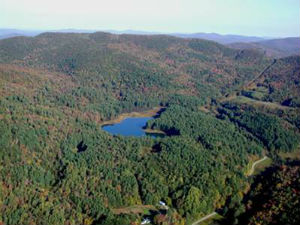Since the first official State Forest (L.R. Jones State Forest) was acquired in 1909, the State has acquired over 365,000 acres of land in more than 200 towns for recreational and conservation purposes. These diverse holdings are managed by the Agency of Natural Resources (ANR) and include State Parks, State Forests, Natural Areas, Wildlife Management Areas, and fishing and boating Access Areas. ANR also protects lands through conservation easements that it holds and stewards. These easements protect privately-owned forestland, riverfronts, wildlife habitat and lands for public access.
The Agency acquires lands and interests in lands for a variety of reasons, including the protection of forestland, wildlife habitat, natural communities, water quality, wetlands, recreational resources and riparian areas. Each Department within the Agency works to effect these goals or specific aspects of these goals through its acquisition programs. ANR’s land acquisition work follows a specific process, overseen by the Agency’s Land Acquisition Committee and Land Acquisition staff.

To carry out its acquisition work, ANR uses multiple funds and funding sources. The Vermont Housing and Conservation Board is a principal source of conservation funding within the state. The Agency also utilizes Federal funds, including the Forest Legacy Program, Pittman-Robertson Funds and the Land and Water Conservation Fund, to protect and conserve land.
In addition to its internal acquisition work, the Agency works closely with conservation and partner organizations around the state to conduct its conservation missions. Groups like the Vermont Land Trust, The Trust for Public Land, The Nature Conservancy, The Conservation Fund and the Green Mountain Club play critical roles in conserving land around the state and helping the Agency to reach its land acquisition goals.
Act 59, the Community Resilience and Biodiversity Protection Act, sets ambitions goals of protecting 30% of Vermont by 2030 and 50% by 2050. To prepare for this, ANR and the Vermont Housing and Conservation Board (VHCB) have been tasked with performing an inventory of Vermont’s conserved lands and conservation practices, and preparing an Inventory Report by July 1, 2024. ANR and VHCB, with public input and engagement, will then draft a Conservation Plan that articulates how the state will meet its conservation goals, to be completed by December 31, 2025.
Read more about the Vermont Conservation Strategy Initiative (the "30-by-30 Initiative").
